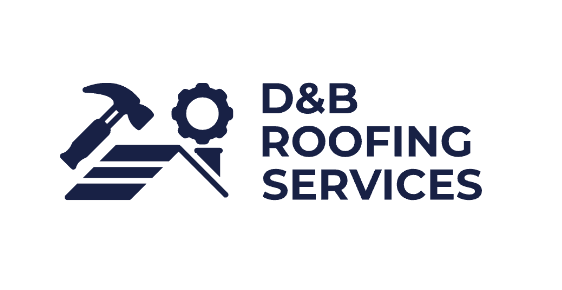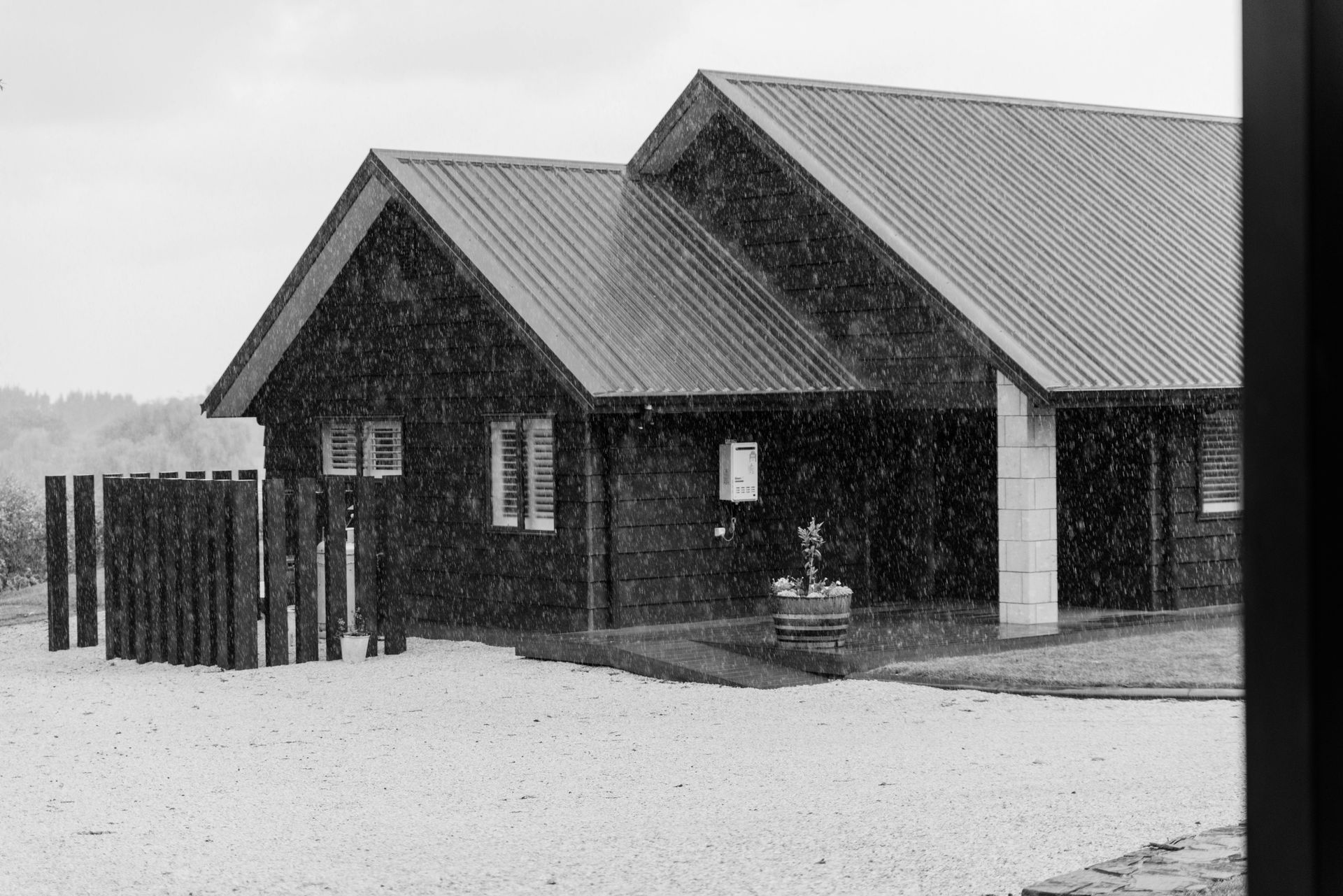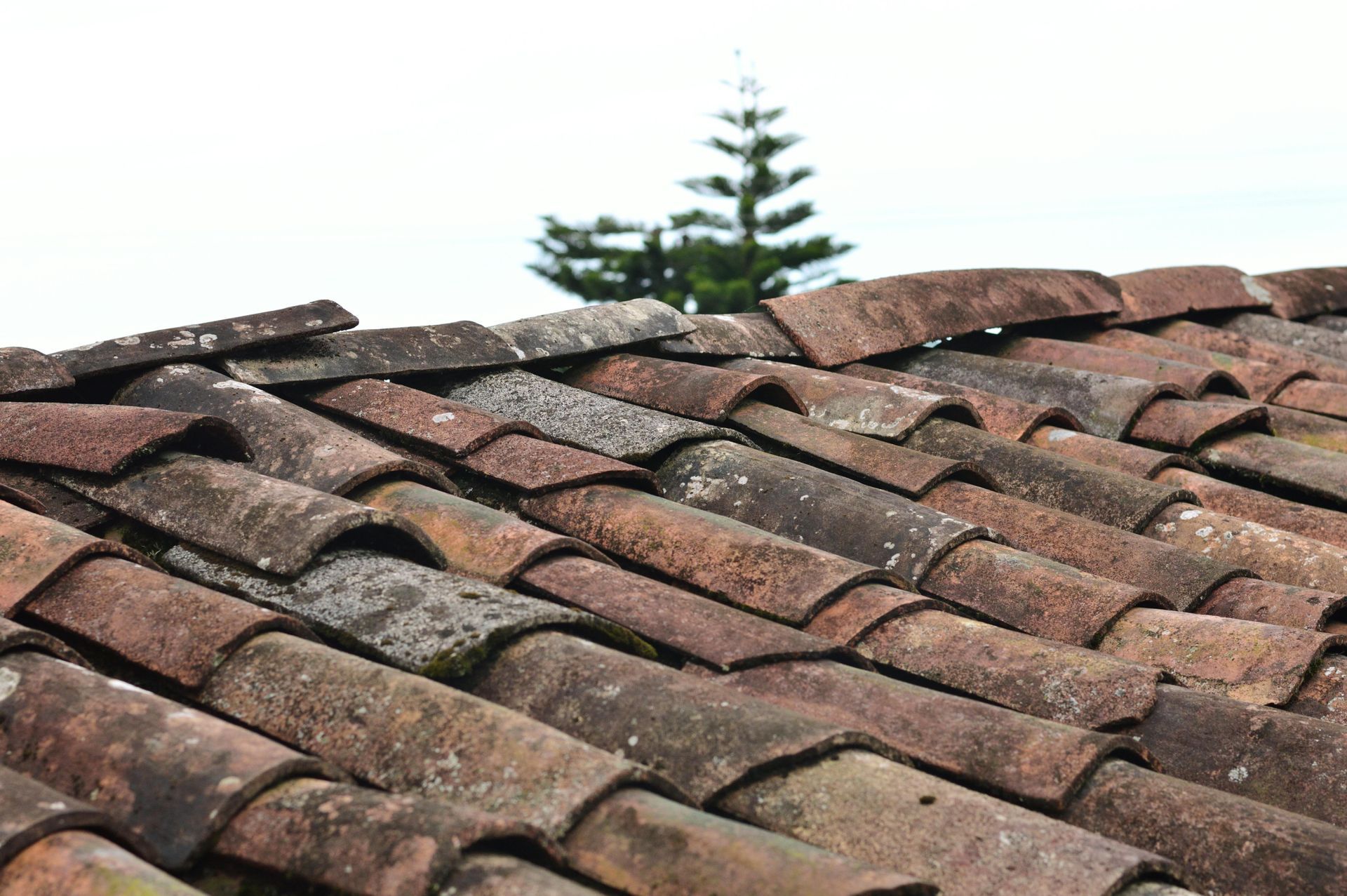Common Chimney Issues That May Be Harming Your Roof
Key Takeaways
- Cracks in the chimney crown let water seep into the chimney and roof, causing leaks and damage.
- Faulty flashing around the chimney can let rainwater soak into roof materials and walls.
- Damaged bricks and mortar on the chimney can weaken both the chimney and nearby roof areas.
- Blocked chimneys from debris or animal nests trap moisture, which can harm the roof.
- Water pooling at the chimney base signals drainage problems that can lead to roof leaks.
- Regular inspections and repairs help protect your roof and home from chimney-related damage.
Cracked or Damaged Chimney Crown
The chimney crown sits at the very top and seals the opening around the flue. It keeps rain, snow, and debris from getting inside the chimney. When cracks form, water slips through and seeps into the chimney’s interior or the roof around it. Over time, this leads to ceiling stains, roof deck damage, and mold inside the home.
Common signs of a damaged chimney crown:
- Hairline cracks on the concrete surface
- Pieces of concrete falling away
- Water spots on the ceiling near the fireplace
Spotting small roofing repairs, particularly repairing the crown promptly stops water damage before it spreads.
Faulty Chimney Flashing
Flashing is the sheet metal that covers the seam where the chimney meets the roof. Its job is to keep water out of this vulnerable joint. Over time, flashing loosens, rusts, or separates from the chimney or shingles. When that happens, rain can slip underneath and soak the roof decking, insulation, and even interior walls. Properly installed flashing creates a tight seal that protects both the chimney and the roof.
Watch for these flashing problems:
- Rust or visible gaps in the flashing
- Water stains on walls or ceilings near the chimney
- Musty smells in the attic or upper rooms
Deteriorating Chimney Masonry
Brick and mortar on the chimney face constant exposure to rain, sun, and freeze-thaw cycles. Over time, bricks may chip or crack, and mortar joints crumble away, allowing water to seep into the structure. Addressing masonry issues early keeps water from finding paths into your roof system. This not only weakens the chimney but also affects the roof where water travels beyond the chimney. By spotting these early on, you’ll know when it’s time to replace your roof as well.
Here’s a helpful table summarizing common masonry issues and their impact:
| Masonry Issue | Impact on Roof and Home |
|---|---|
| Spalling bricks | Loose material clogs gutters or damages shingles |
| Crumbling mortar joints | Gaps allow water into attic and roof decking |
| Large cracks in chimney | Water travels through chimney to roof structure |
Blocked or Poorly Vented Chimneys
A chimney needs clear ventilation to remove moisture and gases from fireplaces, stoves, or heating systems. When animals nest inside, debris blocks the flue, or the chimney has poor airflow design, moisture builds up inside. This damp environment can damage the chimney’s interior and cause roof leaks if water collects near the chimney base. Fortunately, a residential roofing service helps deal with these issues that were previously overlooked. Regular cleaning and inspections by professionals protect both the chimney and the roof.
Signs of poor chimney ventilation:
- A musty odor near the fireplace
- Damp patches or visible condensation inside the chimney
- Nesting materials, leaves, or soot buildup blocking airflow
Water Pooling Around Chimney Base
When water gathers around the base of the chimney, it signals bigger problems. Poor flashing, clogged gutters, or an improperly sloped roof can trap water in this spot. Water that sits for long periods seeps into roof shingles, underlayment, and wooden roof structures. This leads to leaks, staining, and eventually significant roof repairs.
Look for these signs:
- Dark patches on shingles close to the chimney
- Damp insulation in the attic
- Consistent roof leaks after rain
- Redirecting water away from the chimney base preserves the roof’s condition and prevents long-term structural damage.
Frequently Asked Questions
What causes a chimney to leak into the roof?
A chimney frequently allows water to seep into the roof due to issues like cracked crowns, faulty flashing, worn bricks, or mortar joint gaps. Water slips through these openings and travels into roof decking, insulation, and interior walls, causing stains and structural damage.
Can damaged chimney flashing really cause roof leaks?
Yes. Flashing seals the gap between the chimney and roof. If flashing rusts, bends, or separates, water can leak into the attic and roof structure. Over time, this leads to stains, wood rot, and even ceiling damage inside your home.
What is the chimney crown, and why is it important?
The chimney crown is a concrete or mortar slab that covers the top of the chimney. Its job is to keep water out of the chimney interior. When cracked or damaged, the crown lets water seep inside, which can eventually damage the roof and surrounding areas.
Is chimney damage always visible from outside?
Not always. Some damage starts inside the chimney or under roof materials, making it hard to spot without an inspection. Water stains inside the home, musty smells, or unexpected roof leaks can also signal chimney problems.
Can animals cause chimney issues that harm my roof?
Yes. Birds, squirrels, and other animals sometimes build nests in chimneys, blocking airflow. Blocked chimneys trap moisture inside, which can damage the chimney structure and nearby roofing materials.
Final Thoughts
A chimney might seem separate from the roof, but the two work together to protect your home from the elements. Cracked crowns, faulty flashing, masonry damage, and poor ventilation often start small but grow into big problems if ignored. Keeping your chimney in good condition protects both your roof and the rest of your home.
If you notice any of these issues or see signs of water damage near your chimney,
contact D&B Roofing Services for inspection, repair, and
siding services before it affects your roof and interior spaces.


